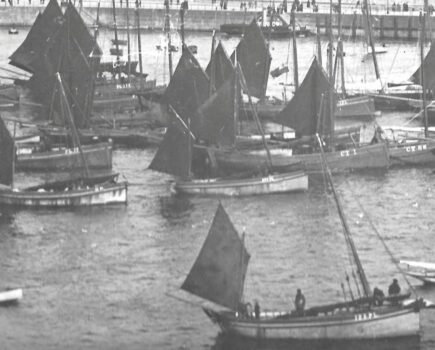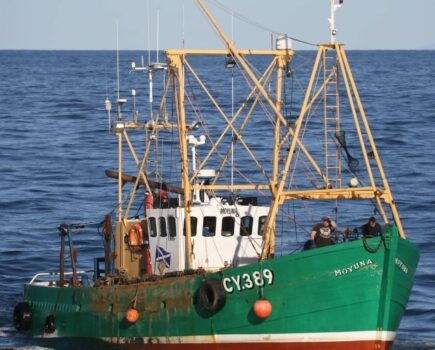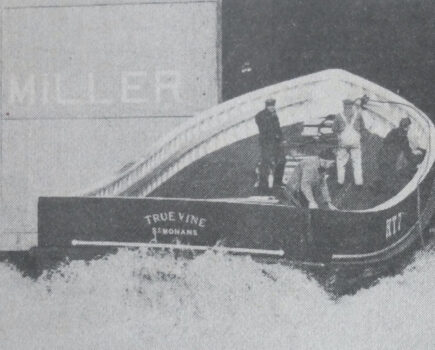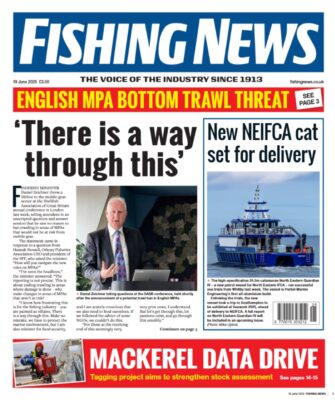Originally Islesman and later Boy Cameron II, the 1967 Noble’s build, the Islander BA 316, is a stalwart of the Clyde prawn fleet
By Mike Smylie
Launched by Alexander Noble and Sons of Girvan as yard number 58, Islesman SY 433 was built as a trawler with a Kelvin T6 180hp for Alexander McLean of Ness on the Isle of Lewis. She was financed through the Highlands and Islands Development Board (HIDB) grant scheme, and was also used for training up crews for other new builds at the time.
There had been another Islesman in Stornoway, registered SY 248, which had been built by Jones of Buckie as MFV 324 in 1945. This was converted for fishing in 1949 as Craigewan PD 416, and subsequently sold to Stornoway in 1961, when she was renamed Islesman. This was the first HIDB training boat in Lewis, skippered, I believe, by Jimmy Chisholm. That vessel was sold to Northern Ireland in 1964 and re-registered N 246.
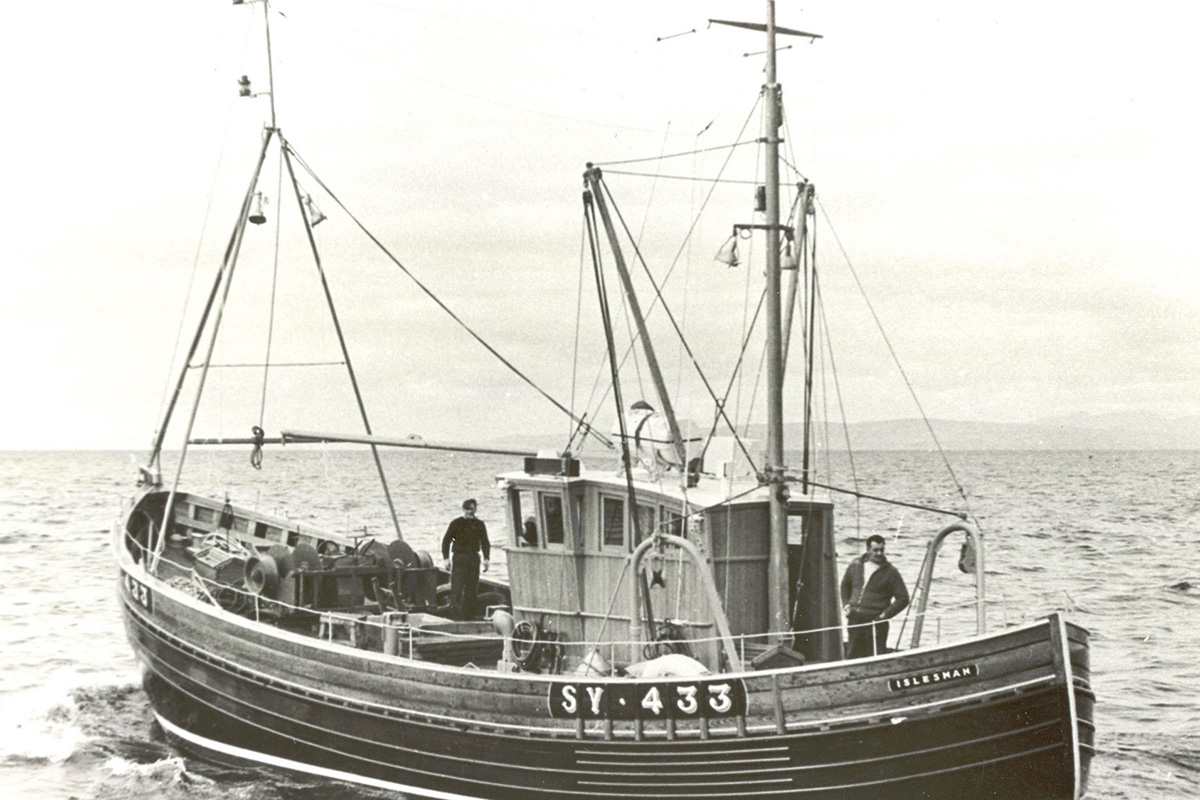
The new vessel on sea trials.
Islesman SY 433 has been described variously as ‘the sexiest boat ever to be launched in the Clyde’, a ‘cracking sea boat’ which ‘runs before the wind like a dart’ and ‘like a bulldog that boat, means business’. A mix of metaphors, but certainly a well-respected vessel – though hardly surprising given she’s Nobles-built.
In 1976, she was sold to Alexander Houston who previously had Boy Cameron BA 201, built by William Weatherhead and John Blackie in 1974. The Boy Cameron was sold to Amble, becoming Shalimar II, a few weeks after he bought the Isleman. He then renamed his new vessel Boy Cameron II, after his son Cameron Houston, re-registering her as BA 141.
Cameron told me that his father based the vessel in Garlieston, just north of Isle of Whithorn. “They usually trawled for whitefish and prawns in the summer months, then dredged for clams and queenies in the winter. They did go north to Skye to the clams a couple of winters.”
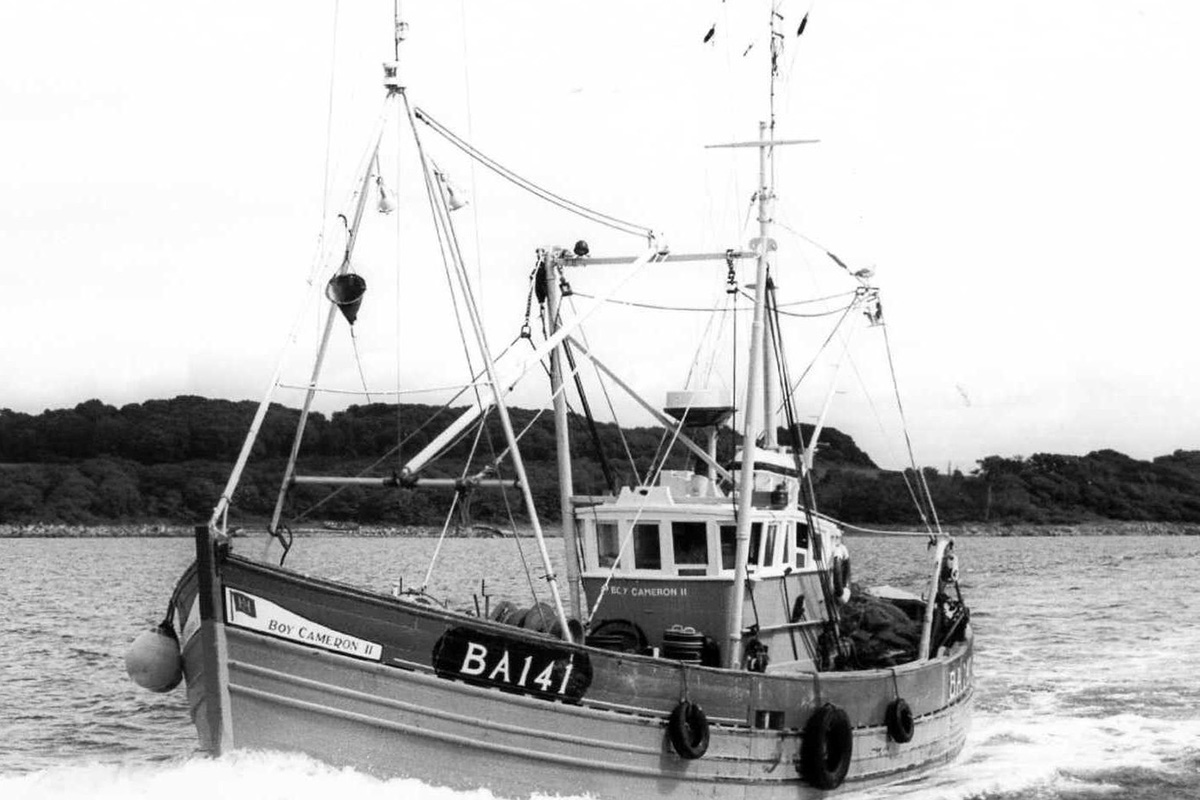
Re-registered and based in Garlieston after 1976. Image credit: A. Denholm
In 1982, Alexander Houston decided to semi-retire and Boy Cameron II was sold to the Mackays of Portmahomack in Easter Ross and re-registered INS 314.
Portmahomack only has a small harbour, and I’d not really considered it a potential base for a 51ft, 25t vessel. I visited several years ago when researching salmon fishing and recall finding various cobles around the Tarbat peninsula. However, on discovering a Facebook page dedicated to Portmahomack, I was soon able to find the families of the Mackays that owned Boy Cameron II.
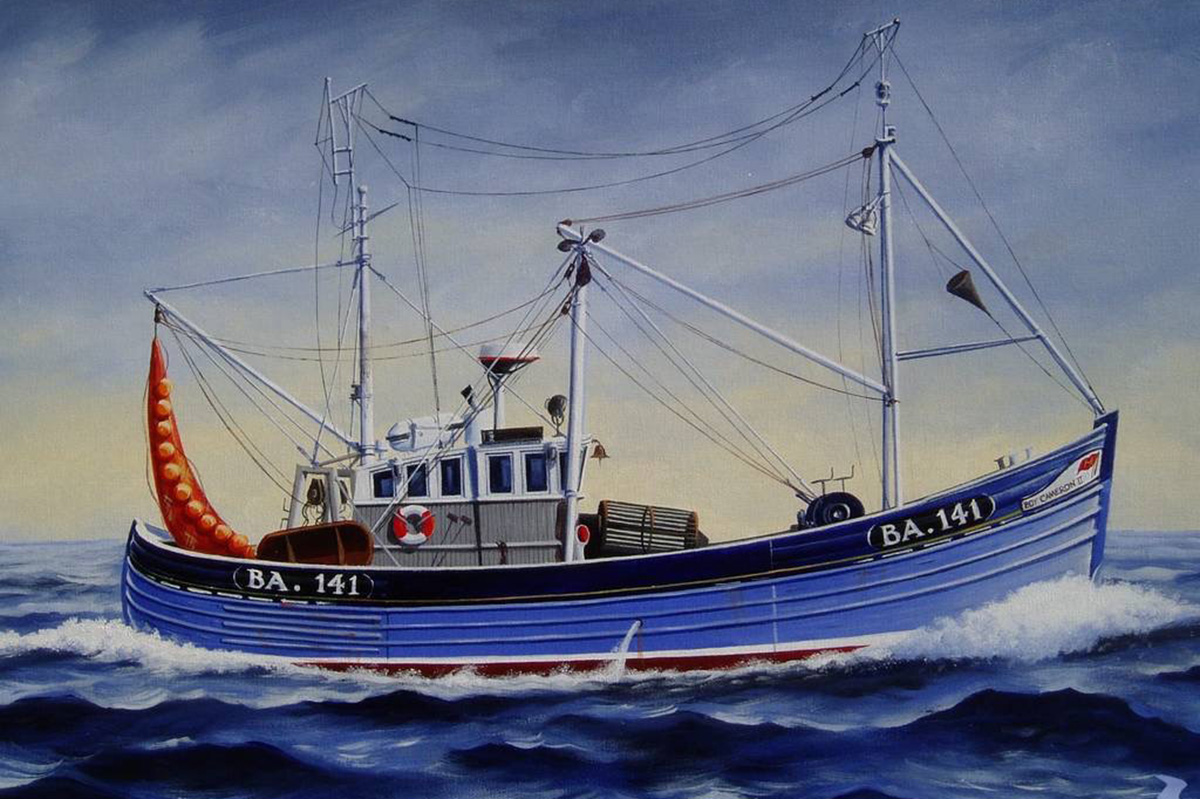
Boy Cameron II, painted by Cameron Houston – after whom the vessel was named. (Photo: Cameron Houston)
It was Hamish (James) and John Mackay that owned her, with Hamish as the skipper and John handling the shore side. This was the brothers’ first boat. Crews came from around the peninsula including, over an eight-year period, Jim Ross and Angus Mackenzie.
Through Facebook I was able to communicate with John and Hamish’s daughters Justine Mackay and Karen Mackay, and their cousin Gillian Davey. Hamish still lives locally, though sadly John died a few years ago. I had to smile when I read one of Gillian Davey’s posts: “My Uncle Hamish’s boat; my big sister remembers being sick over the side of it!”
Through Karen I was able to speak to Hamish. “Trawling always with that boat, and never the pair trawl,” he told me. “Prawns and whitefish. I never was at the clams with her. Did the sprats until they dried up. The fishing was all around, up and down the coast, and lots over the west side. I was at the drift-net before and also the ring-netting, which was mostly on the west side, so I got to know the ports.
“I can remember the Integrity, but forget the other names of boats I worked the herring with. But we took the Boy Cameron over there – Lochinver, Clash, Ullapool, Mallaig, Oban, Stornoway – I knew them all from the ring-net days.
“But I’ll tell you, that was the best boat I’ve ever been on. Really good, solid. Really stable. But when the quotas came in, we needed something bigger, so when we sold her we got the Athena.”
This was the 1973-built Athena, built at Macduff, a modern ring-netter which they registered as INS 181. Two years later they sold her and bought Fair Morn (ex-Jasper, Noble’s- built in 1973 and still around as a pleasure boat), which they registered as SY 529 and fished until 2008.
But the family still have fond memories of Boy Cameron II. Justine Mackay, John’s daughter, remembers visiting the boat at Lochinver, which entailed a 150-mile round trip, and recalls larking about aboard with her sisters.
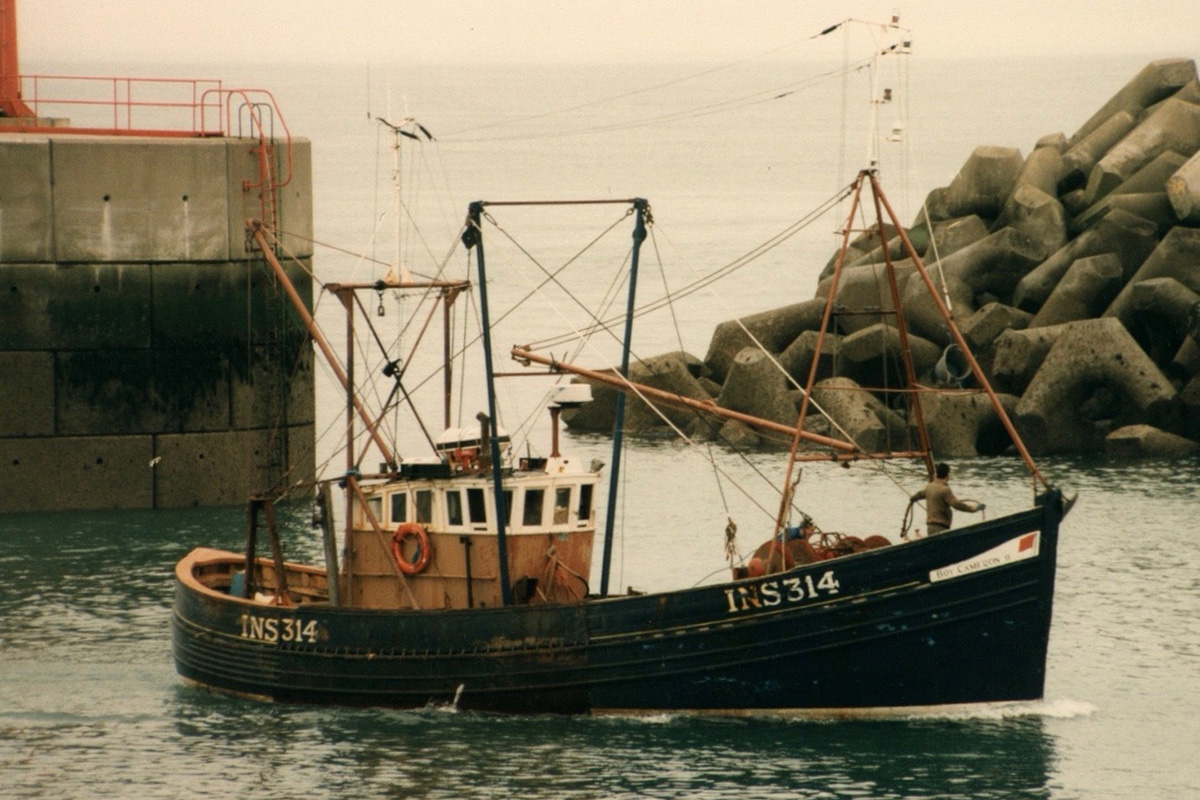
At Lochinver in around 1983. (Photo: John Macleod)
In 1989, Boy Cameron II was sold to Norman Parker of Kirkcudbright and re-registered BA 319. He later renamed her Islander. He only kept her a few years, at the clams.
Then, in 1995, she was sold to skipper Sydney Miller and his partner Michael Martin of Maryport, who fished her in the Irish Sea. They took the Kelvin out and replaced it with a Volvo.
In 2004 she was sold to Robert (Robbie) Roper of Ballantrae. He part-exchanged the smaller Rebecca J BA 833 for the Islander. He told me that he remembered there being quite a lot of stainless steel around the boat, which was unusual. Soon after he bought her, he took her over to Noble’s and had, amongst other jobs, the wheelhouse relined. Beneath the old lining they found messages from Johnny Gaff, who worked for Noble’s for many years before setting up on his own as a boatbuilder.
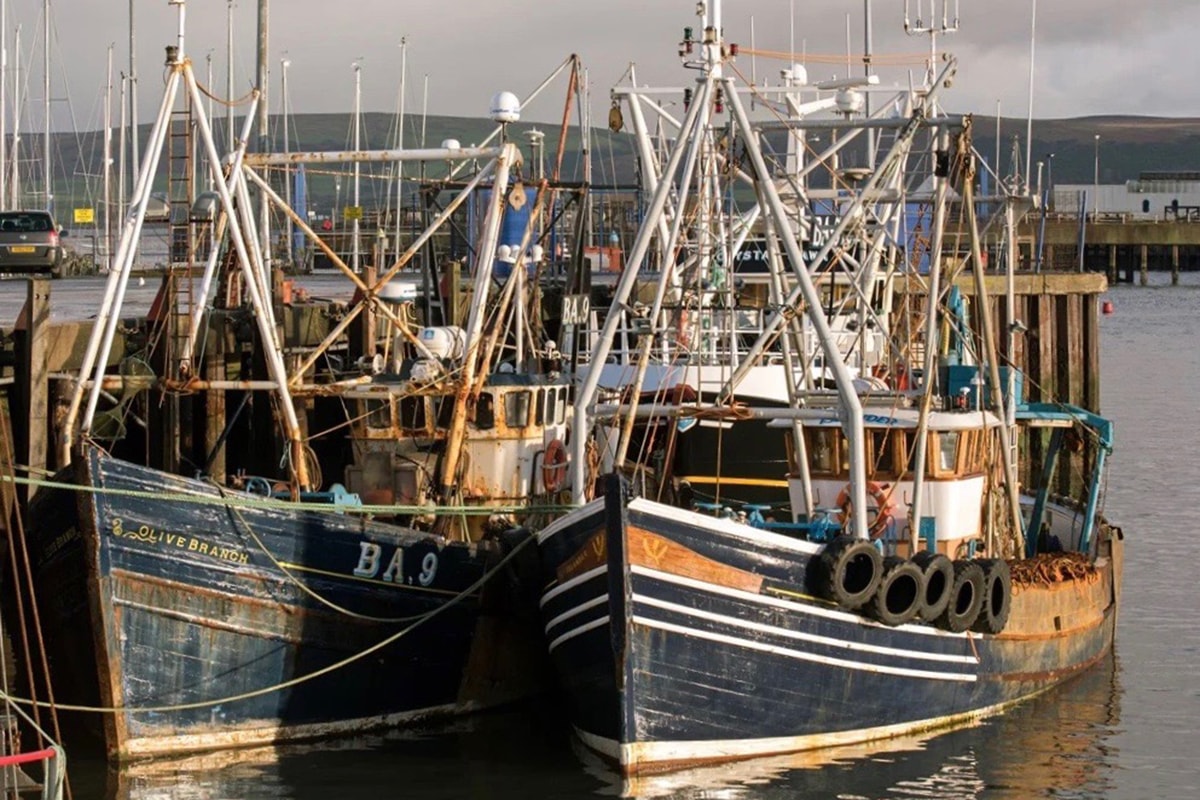
Berthed outside Olive Branch at Peel. (Photo: Mike Craine)
“Johnny had built the original wheelhouse when she was new, and he had written little things such as: ‘Built by Johnny Gaff, master craftsman’. There were more under the lining in the aft cabin – some, which I won’t repeat, were pretty detrimental to his bosses!”
Robbie describes himself as a nomadic fisherman. “We jumped about, wherever was best. Right down to south of Cardigan Bay, or down towards Grimsby on the other side, up to the Moray Firth. Initially we were scalloping and prawning, but started the queenies in 2011, I think. No point hanging about if there’s no money there, and best to fish what’s around. We had four or five seasons over in the Firth of Forth, and we were at the prawns there in 2019.”
I heard that Robbie had a good reputation for really looking after the vessel. “Yes, I was probably a bit OCD with that. But it doesn’t take that much to get your finger out and get the jobs done. Worth it in the long run.” You can’t fault that.
“I had her out at Noble’s every year, and recaulked the entire boat over the years. Nothing major. I replaced the Volvo that Syd had put in with a Doosan, but that failed after a couple of years – a problem with back pressure – and was replaced with the present Doosan L136TI 180hp.”
In 2012 or 2013, Robbie had a new wheelhouse fitted whilst gutting much of the boat. Shaun Poland told me: “My dad built Islander’s wheelhouse – but it was made for and fitted to the Ocean Queen N 146. When the Ocean Queen went aground and was written off, the wheelhouse was removed, altered slightly and we fitted it to the Islander. The galley was extended and the door was moved from the back to the starboard side.”
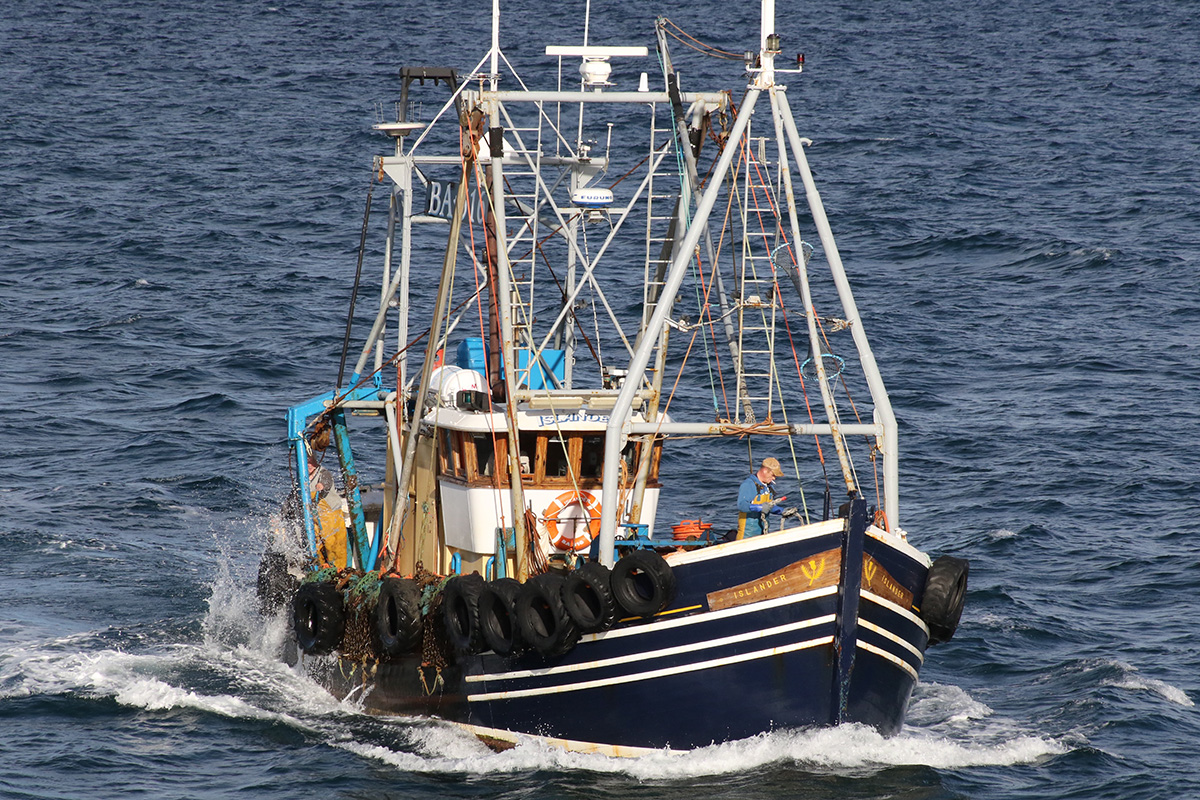
At sea in 2011. (Photo: Darren Purves)
Islander is ‘a great seaboat’, Robbie told me. “She’s just a lady that knows what she has. We pushed her hard at times around the Irish Sea, and she coped well.”
But in 2020, with the start of the Covid lockdowns, he sold her to Noble’s of Girvan. He’d had an offer from Wayne Ashbrook, but had declined it.
Wayne went on to buy her from Noble’s in the summer of 2020. He employed a couple of skippers – one from Campbeltown and another from Ireland – and continued fishing her around the Clyde and Ireland. He also added the present shelterdeck.
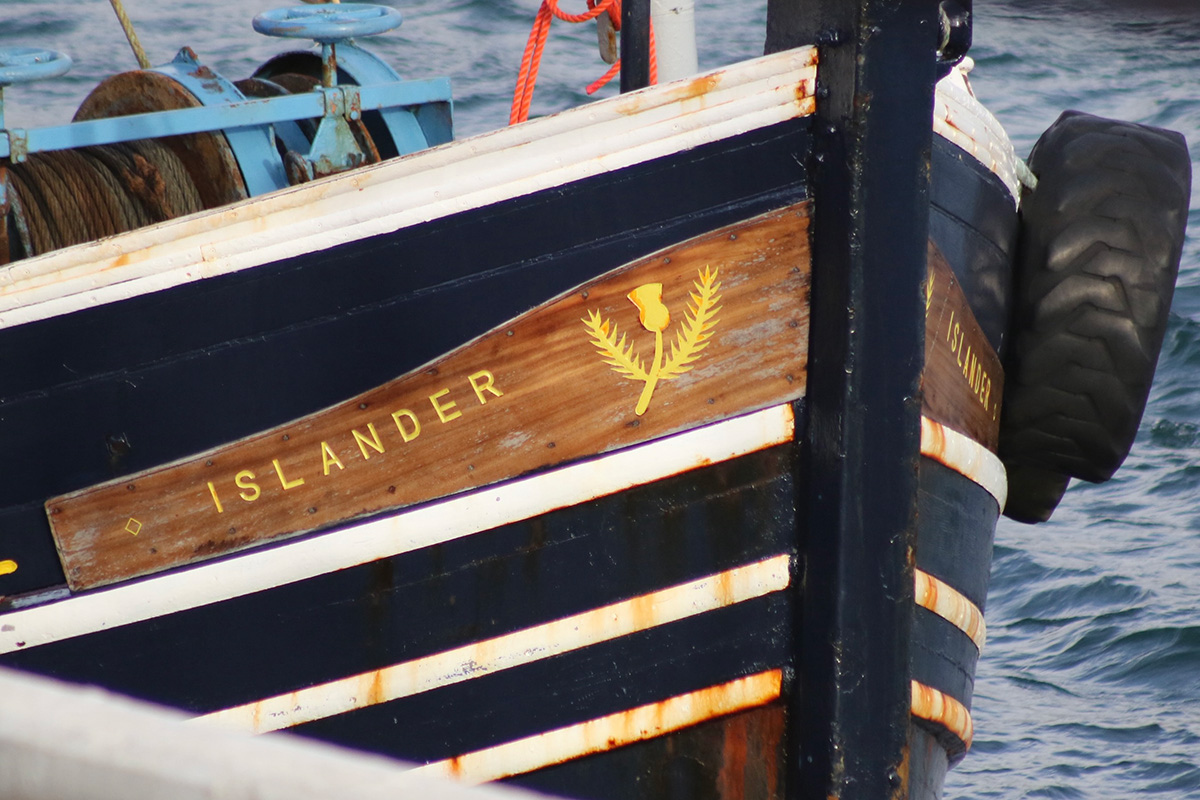
The proof of a well-built boat – the Noble’s thistle. (Photo: Darren Purves)
In 2023 she was sold once again to Darren Clark from Bunessan. He told me: “I am from the Isle of Mull so fish out of Oban, but we have just been around doing the winter in Shields. I have also got the Girl Jean LH 73.” The Girl Jean is another one for this series, as she’s a Miller’s build of 1973 vintage.
I asked him why he bought the Islander. “Because she’s a well-built boat – a rolly boat, but a safe roll, and she sits perfectly in the water. Built by good boatbuilders – though she has had me up sleepless nights, that’s for sure.
“She will be back up to full running soon, and slipped in May for her full DTI, and then that will be her for many more years to come. She’ll be sticking to twin-rigging for prawns out of Oban in the summer, and then winters on the east coast.”
Thanks to Cameron Houston, Justine, Nicola and Karen Mackay, Gillian Davey, Robbie Roper, Shaun Poland, Darren Clark and the Tain Museum, and to the various photographers.
The Portmahomack Heroes
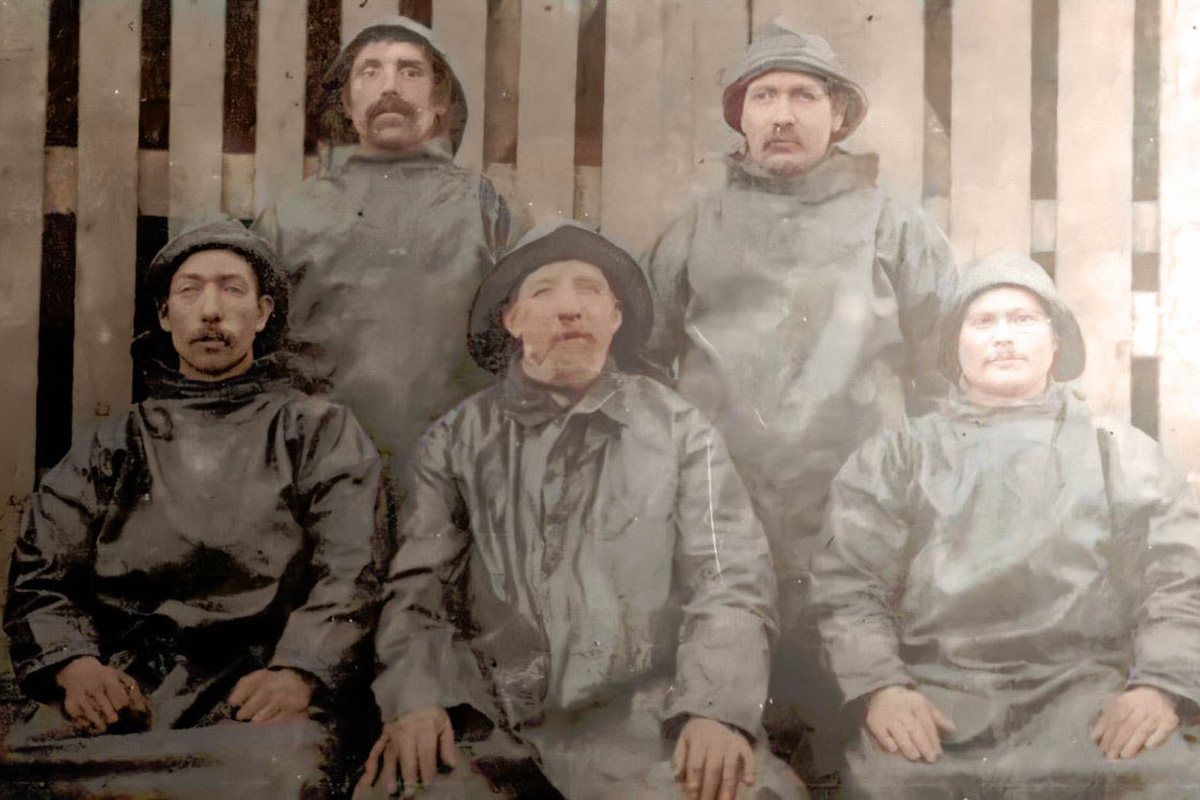
The crew of the Auricula. (Photo: Tain Museum)
Hamish and John Mackay were descended from two of the Portmahomack Heroes, David and Donald Mackay. On the night of 3 December, 1910 the steamship Sterlina was en route from the upper reaches of the Dornoch Firth to Glasgow with a cargo of timber when, emerging from the firth, the engine failed.
The vessel drifted north onto the Gizzen Bring, a sandbar stretching almost right across the entrance to the firth. It being a wild night with onshore seas pushing the boat further onto the sands, any attempt to launch the small boat was futile.
Distress flares were sent up and these were seen from all around, but no rescue attempt could be made. As the tide rose, the vessel began to break up.
The three crew – Captain Richard Macrae, David Mackenzie and Donald Macleod – desperately held on. The captain climbed up the mast, indicating that the other two should follow. But they were exhausted and both eventually succumbed to the inevitable, with David Mackenzie saying: “I am done, Dick, goodbye,” as he slipped into the water.
At first light the following morning, a lone figure was spotted atop the mast. Several fishing boats set out including the sailing fishing vessel Auricula from Portmahomack, crewed by skipper David Mackay, his brother Donald Mackay and James Skinner, Alexander Macdonald and William Smith.
After 16 hours in treacherous, freezing conditions, they managed to get a rope across to Richard Macrae after tacking back and forth to gain a few yards each time, all the while watching the state of the tide. They eventually got him onto the fishing boat and returned to port.
The crew were given awards for their bravery from the Board of Trade and the Carnegie Hero Trust. Skipper David Mackay was given a fine set of binoculars by the Turbot Council.
This story was taken from the April 2024 issue Fishing News. For more like this, subscribe to Fishing News here or buy the latest single issue for just £3.50 here.
Sign up to Fishing News’ FREE e-newsletter here.




